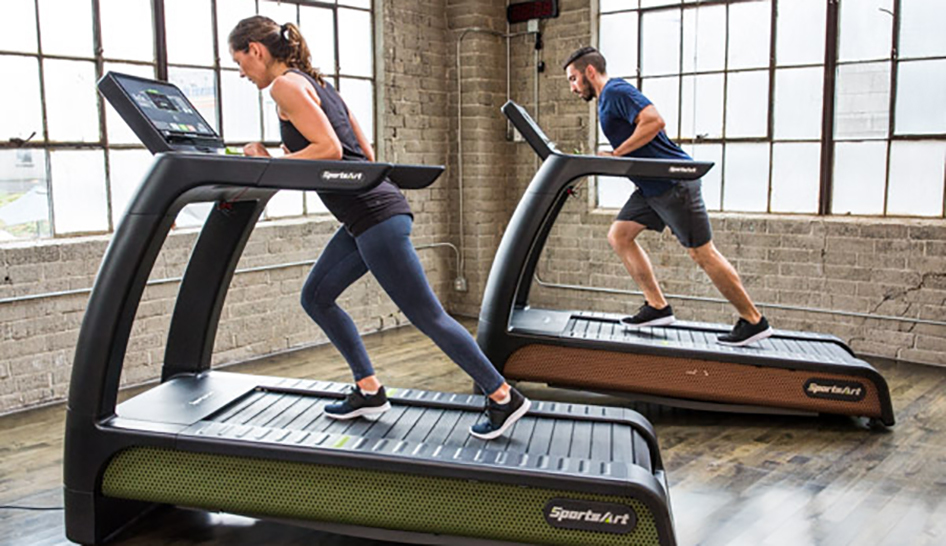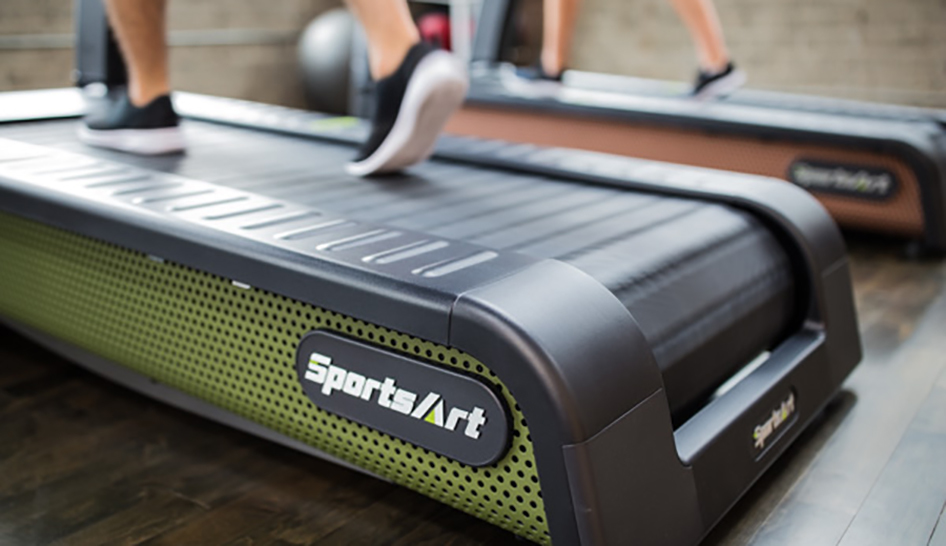
This is an IHRSA featured post, brought to you by SportsArt.
Give Your Gym a Makeover by Rethinking Your Floor Space
Has your gym become a cluttered hot mess? Here's how to rethink your floor space and aesthetics to create a more pleasing environment for members.

You may not have noticed, but your health club may be shrinking. Not the entire building, of course, but with functional fitness gear, spa and tanning services, personal training areas, dance fitness classes, group training, and other fitness trends taking root, your club may be running out space.
Design and environment matter, and not just for safety/liability reasons. How you utilize space directly affects revenue and retention. Today’s clubs don’t just have to accommodate multiple trends and equipment upgrades, they have to compete with the boutique aesthetic that’s become more commonplace in the industry.
Younger demographics, in particular, are more sensitive to design. Tech companies, such as Apple, place a great deal of emphasis on sleek, minimalist packaging and clean graphics. It’s commonsense that when faced with two products of similar functional ability, the one with the better aesthetics wins out every time.
Rethinking your space and environment is also something you should do on a regular basis. According to The IHRSA Health Club Business Handbook, “…once every ten years, most clubs need a total overhaul/reconfiguration if they wish to maintain market momentum and remain competitive.”
So how should you overhaul your club’s space and environment? It may help to think small.
Adopting a Boutique Mindset
Some health clubs are competing against boutique clubs by appropriating some of the design effects and unique programming of popular studios. Whether or not you take that step, you should look at how space and aesthetics are utilized in a typical boutique establishment.
One reason why boutique studios make bold choices is simply because a lack of resources and space can force more creative solutions. “Every square foot has to be maximized for revenue generation,” says designer Bryan Dunkelberger of S3 Design, who shared his expertise in IHRSA's Guide to the Boutique Studio Phenomenon. “It all starts with how you’re generating income.”
You should have data on your member profile and what type of equipment and programming they value. And you should also have an eye on the type of member you want to attract. According to The IHRSA Health Club Business Handbook, “Design, too, can also affect demand. New clubs, especially when they are impressive in terms of layout, function, and design, always create fresh demand.”
“Every square foot has to be maximized for revenue generation. It all starts with how you’re generating income.”
Bryan Dunkelberger, Designer
S3 Design
A good place to start is “spatial creativity,” where color choices, lighting, arrangement of architectural elements, and other factors can transform small spaces, making them appear larger than they are.
“When we’re trying to create ‘size,’ we keep everything simple and clean,” says Dunkelberger. “If you can make the perimeter of the studio seem like a big box, or a ‘wrapper,’ and have the divider walls between the support spaces sort of ‘float’ in the space, delineating the studio, it can create the impression of a much larger area.”
While consumers expect more of their environment on an aesthetic level, they aren’t prepared to sacrifice the tools they want for their workouts. Equipment is a more complex challenge when it comes to space and aesthetic considerations. As equipment quickly evolves, some of those costly machines you bought just two years ago may already seem out of date to your members. You have to choose wisely.
Rethinking Your Cardio Space
Part of what’s crowding out your club space is the exponential increase in equipment associated with new functional fitness modalities. As an IHRSA article once put it: “Mats, partitions, basketballs, kettle bells—you need to put them somewhere when you're not using them. If you don't include enough storage space, your health club will look cluttered and disorganized.”
More gear on the floor shouldn’t take away from your bread-and-butter: the cardio room.
According to the IHRSA Health Club Consumer Report, treadmills and weight/resistance machines are the two most popular offerings utilized by health club members. That’s closely followed by stationary bikes and ellipticals/cross-trainers.
Industry statistics on space allocation backs this up. According to The IHRSA Health Club Equipment Report: Spending, Utilization & Programming Trends, cardio machines take up the most space in clubs at 20.1%; followed by traditional strength equipment (15.7%); group exercise areas (12.1%); and functional training spaces (8.2%).
Of cardio machines, treadmills are an average of 33.9% of available equipment, followed by ellipticals at 25.6% of floor inventory. When rethinking your space requirements, this is the place to start.

Innovate to Renovate
The challenge is to maximize your treadmill/elliptical cardio space without sacrificing aesthetics—all while being cost-effective. This requires equipment that is exceptionally versatile, technologically up-to-date, and pleasing to the eye.
Clubs looking for options that satisfy these lofty demands—while also creating a buzz with consumers—should consider SportsArt’s ECO-POWR line of cardio equipment. These environmentally-friendly machines harness human energy, then feed it back into the club’s power grid, making them energy sustainable, an especially appealing feature to younger demographics who may otherwise be tempted to opt for boutique studios.
Here are the two “watts-to-grid” ECO-POWR models you should consider when upgrading your cardio space:
- The Verde. Besides converting human energy to utility grade electricity, this treadmill is loaded with the latest tech options and eye-popping LCD screens. This treadmill has state-of-the-art slats and belts, while offering numerous programming options for every level of exercise ability, from beginner to elite athlete.
- The Verso. This three-in-one cross-trainer allows for elliptical, stepper, and cycle movements, and is similarly engineered to be tech advanced and energy sustainable. Like the Verde, the Verso can accommodate every demographic and exercise level.
Because these innovative cardio machines save on energy while providing a wide spectrum of workout options, SportsArt’s ECO-POWR line is a cost-effective way to maximize your cardio space while providing consumers a technologically advanced piece of equipment with aesthetic appeal. Clubs find that members committed to green lifestyles—a quickly growing demographic—line up to use ECO-POWR equipment because they believe in sustainable products—and they also enjoy seeing how much energy their workout can create. Having equipment that members actually use is a big part of maximizing your space. And for traditionalists, SportsArt also has regular stationary cycling and elliptical machines with advanced technology and aesthetic appeal.
SportsArt also works with a consulting firm that can help you reconfigure your facility with other sustainable renovations, such as installing solar panels and other green products. Simply talk with a SportsArt representative for more information.
To see the Verde, Verso, and other eco-friendly products in action, visit SportsArt’s booth at the IHRSA 2018 Trade Show on March 21-24 in San Diego. In the meantime, visit their website or call 1-800-709-1400.

Jim Schmaltz is Editor-in-Chief of Club Business International.